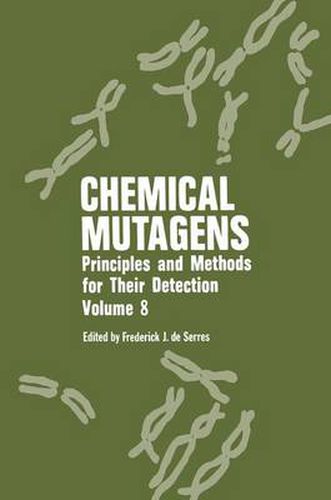Readings Newsletter
Become a Readings Member to make your shopping experience even easier.
Sign in or sign up for free!
You’re not far away from qualifying for FREE standard shipping within Australia
You’ve qualified for FREE standard shipping within Australia
The cart is loading…






Volume 8 of Chemical Mutagens covers a wide range of topics in this continuously changing field. This volume includes chapters on the detection of genetic damage in mammalian sperm both at specific loci and over the entire genome. The discussion of in vitro techniques for working with mammalian cells covers not only specific locus assays but also cellular activation systems. Another chapter extensively discusses the need for a revised protocol for the micronucleus assay. Structure activity relationships are investigated in a chapter dealing with hair dye constituents. One of the most comprehensive chapters deals with problems associated with the detection of mutagenic effects in defined human populations. Finally, there is a detailed presentation of a comprehensive study tabulating the genetic bioassay data on some known or suspected human carcinogens. In keeping with our policy of publishing important legislation in the area of chemical mutagens, we have also included the Council of the European Communities Directive of 18 September 1979. Frederick J. de Serres Research Triangle Park, North Carolina vii Contents Chapter 1 Detection of Effects of Mutagens in Human Populations George R. Hoffmann 1. Introduction … … … … … … … … … … … … . . 1 2. Monitoring Progeny for Evidence of Germ-Cell Mutations… . . 3 2. 1. The Classical Approach: Phenotypic Monitoring … … . 3 2. 2. Monitoring for Changes in Gene Products … … … . . 7 3. Detection of Gene Mutations in Somatic Cells… … … … . 9 3. 1. Drug-Resistant Lymphocytes … … … … … … … . 9 3. 2. Hemoglobin Variants … … … … … … … … … 17 4. Nongenetic Indicators of Mutagen Exposure … … … … . 21 4. 1. Alkylation of Proteins … … … … … … … … … 21 4. 2. DNA Damage … … … … … … … … … … …
$9.00 standard shipping within Australia
FREE standard shipping within Australia for orders over $100.00
Express & International shipping calculated at checkout
Stock availability can be subject to change without notice. We recommend calling the shop or contacting our online team to check availability of low stock items. Please see our Shopping Online page for more details.
Volume 8 of Chemical Mutagens covers a wide range of topics in this continuously changing field. This volume includes chapters on the detection of genetic damage in mammalian sperm both at specific loci and over the entire genome. The discussion of in vitro techniques for working with mammalian cells covers not only specific locus assays but also cellular activation systems. Another chapter extensively discusses the need for a revised protocol for the micronucleus assay. Structure activity relationships are investigated in a chapter dealing with hair dye constituents. One of the most comprehensive chapters deals with problems associated with the detection of mutagenic effects in defined human populations. Finally, there is a detailed presentation of a comprehensive study tabulating the genetic bioassay data on some known or suspected human carcinogens. In keeping with our policy of publishing important legislation in the area of chemical mutagens, we have also included the Council of the European Communities Directive of 18 September 1979. Frederick J. de Serres Research Triangle Park, North Carolina vii Contents Chapter 1 Detection of Effects of Mutagens in Human Populations George R. Hoffmann 1. Introduction … … … … … … … … … … … … . . 1 2. Monitoring Progeny for Evidence of Germ-Cell Mutations… . . 3 2. 1. The Classical Approach: Phenotypic Monitoring … … . 3 2. 2. Monitoring for Changes in Gene Products … … … . . 7 3. Detection of Gene Mutations in Somatic Cells… … … … . 9 3. 1. Drug-Resistant Lymphocytes … … … … … … … . 9 3. 2. Hemoglobin Variants … … … … … … … … … 17 4. Nongenetic Indicators of Mutagen Exposure … … … … . 21 4. 1. Alkylation of Proteins … … … … … … … … … 21 4. 2. DNA Damage … … … … … … … … … … …